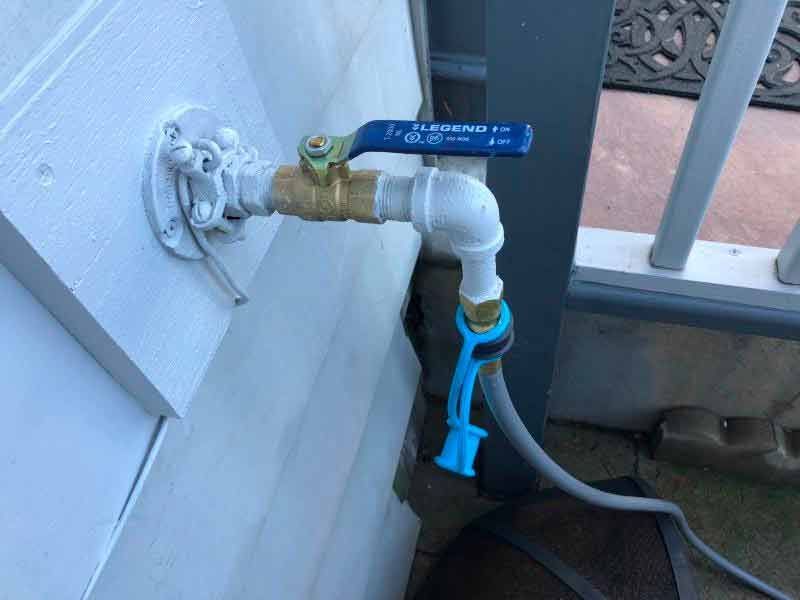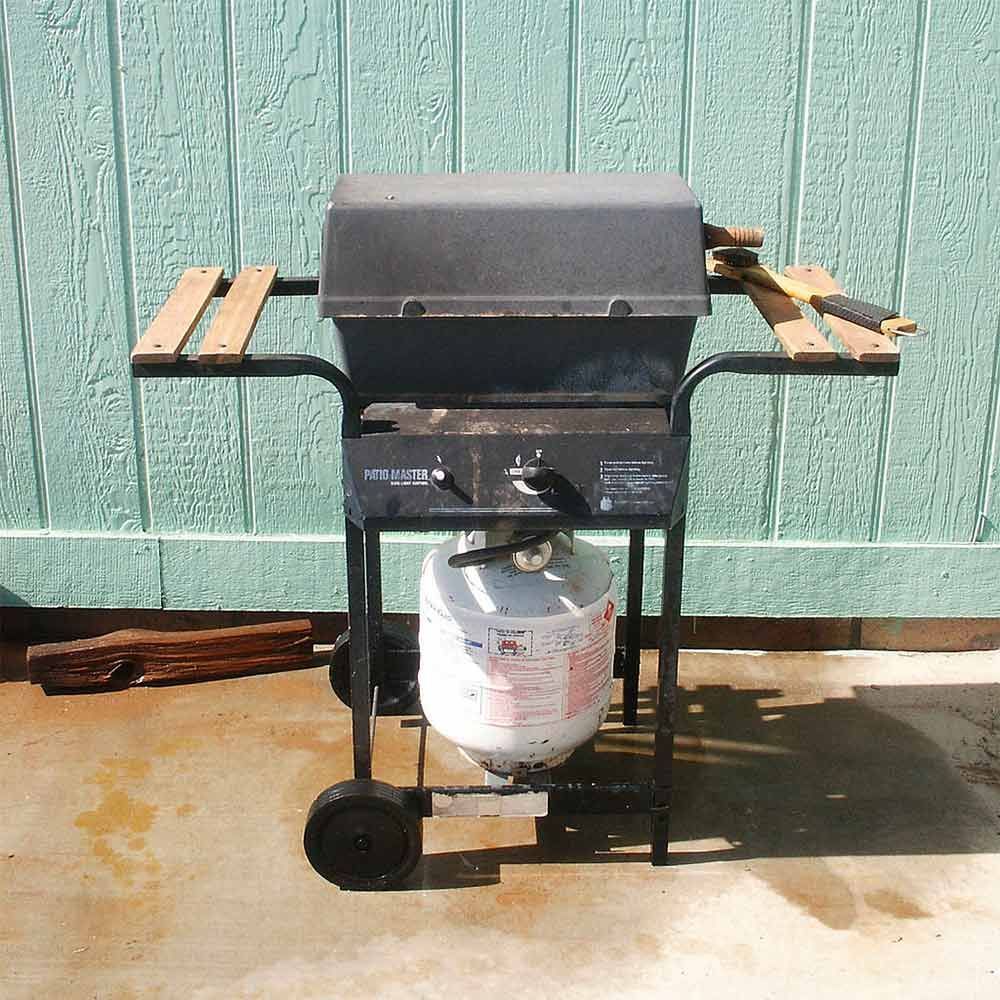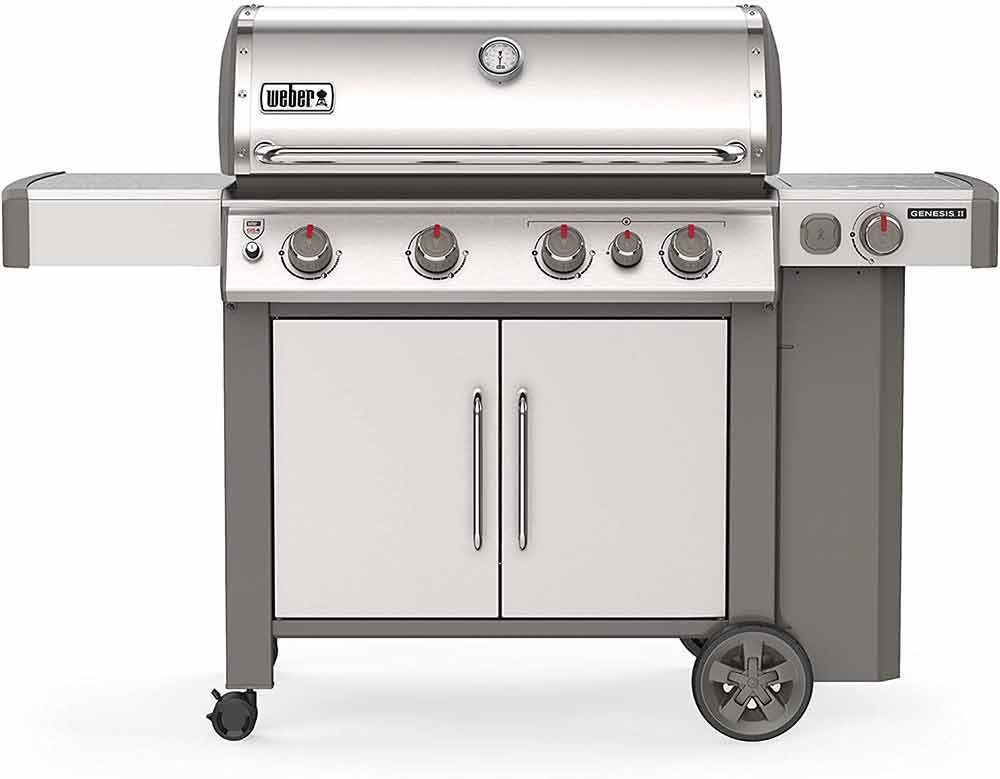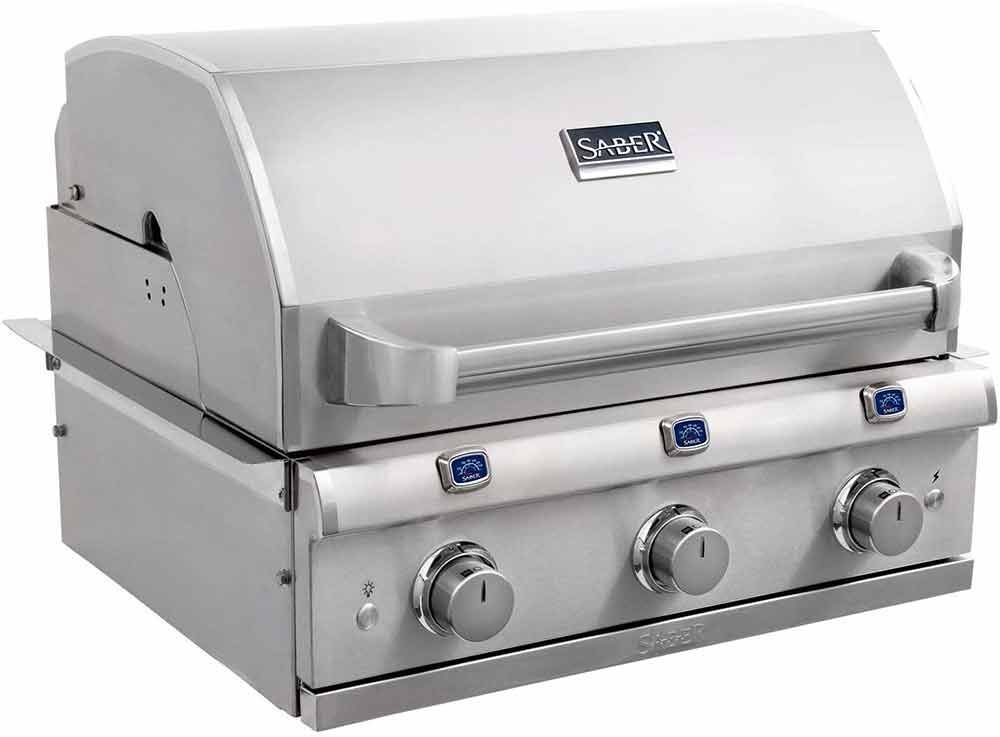Our recommendations are made independently. We may receive commissions from purchases made via our links.
How to Convert a Propane Grill to Natural Gas
We’ll show you how to convert a propane grill to natural gas and vice versa. No matter what type of grill you have, we’ve got you covered.
For this entry, we’ll walk you through how to convert a propane grill to natural gas and the other way around. That way, you’ll have the option and know-how to make all the necessary changes for your BBQ cook fest.
Depending on the factory-default design & features, a gas grill runs on either propane or natural gas. And more often than not, a gas grill is compatible with only one type of gas determined by manufacturers.
Things don’t have to be that rigid though: contrary to popular belief, you can alternate between the two gases when certain needs arise. Converting a gas grill is a tricky process, but if done properly, you can save a considerable sum from unnecessary purchases.
Propane vs. Natural Gas Grills
Gas grills are available in two options: natural gas (NG) and propane (LP) models. Both gases are common fossil fuels and commercially used across the majority of North American households for cooking and heating.
Strictly speaking, the grills themselves aren’t that different regarding outer appearance. Major components— i.e. burners, grates, lid, grease tray, and whatnot— are virtually the same, while the grills’ overall performance isn’t that distinguishable either. In fact, you wouldn’t be able to tell the differences once the grills are up and ready for action. So, what gives?
Natural Gas Grills
Natural gas (NG) grills are expensive from the get-go, and that’s not mentioning installation fees and labor costs. You’d have to renovate a kitchen/BBQ station or island to fit the grill and hire qualified technicians to connect the grill to the gas system running underneath your house.
And it goes without saying that once the setup is completed, the grill is permanently stationed in the premises of one’s home or back yard.

But considering all the initial cost and complicated setup— albeit how hefty things can be— you’ll get an endless and constant supply of fuel, so you can cook freely without fretting over running out of gas midway.
In due time, natural gas grills will be long-term investments that can last for years, even decades, to come with proper maintenance and servicing. They often come with an extended warranty policy that covers components for years. When the parts get rusty or damaged, you can replace them easily.
Propane Grills
Propane (LP) grills, on the other hand, are comparatively less expensive, though this notion isn’t always a sure-fire given. Since the fuel is stored inside a tank/canister/cylinder, setup is straightforward and hassle-free. You can attach/detach the fuel container with ease. But it also means the fuel will run out, at which point you’ll need to refuel or replace it.

Since the fuel source isn’t confined to a fixed spot, you can move these grills around at will. This flexibility is perfect for camping, hunting or going cross-country in RVs, as long as these grills can fit inside the vehicles. Unlike natural gas grills— all of which are bulky and space-taking— there are compact and portable propane grills.

For each type of gas, there’s a corresponding grill gas line designed exclusively for it to run on. Here are our picks for natural gas grills and propane grills.
To sum things up, here’s a table for your convenience:
- Movable
- Comparatively cheaper
- Fits inside vehicles (portable models)
- Great for camping, RV country-crossing, fishing, and hunting trips
- Straightforward & hassle-free setup
- Easy to attach/refuel/replace
- Constant, endless supply of gas
- More durable, buy-once-for-life value
- Best for BBQ islands/stations or used indoors alike
- Durable components & diverse spare parts
- Longer warranty
- Needs refill
- Lower durability
- Permanently fixed
- Expensive
- Installation needed
- Bulky
For avid grillers, arguments and debates about which grill is superior may not be over anytime soon. That said, many brands offer gas grills in both versions, so buyers have more options and do not have to sacrifice one for the other.
Differences between Propane & Natural Gas
Properties & Storage
Natural gas is a common name referring to a combination of various gases, which include methane, butane, ethane, and surprisingly, propane. Since natural gas is best left in its gas state, it’s supplied using a complex pipeline system running underneath your house and is governed with strict regulations and authority.
Propane is extracted from the mix at processing stations. Propane can be compressed into liquid form (a.k.a liquid petroleum gas), making it ideal for storing in tanks, cylinders, and canisters. That also explains the LP Gas sign you’d find on certain gas grill models.
Given its nature and storage, propane is easy to refill and replace. It’s also easily-disposable for your convenience, to boot. You can purchase propane from every hardware store, gas station, or camping gear shop across the country.
Energy Efficiency, Environment Friendliness,Cost
Both are clean-burning fuels as they have small carbon footprints with low emission rates, making them green and environmentally-friendlier than other fuels like kerosene and charcoal. While both gases are odorless, odorants are added for safety reasons during processing and help detect leakages.
Propane burns hotter than natural gas (2500 BTUs per cubic feet to 1000 BTUs per cubic feet, roughly and respectively.) For those who aren’t familiar with this unit, the British Thermal Unit measures the heat needed to increase one pound of water by one degree Fahrenheit. You’ll find this measurement on various heating and cooking appliances around the house.
Considering the current price of natural gas, one can make a case for it being the more economically-viable option in the long run compared to propane. So to sum it all up, you can’t really go wrong with either choice in the end.
How to Convert a Propane Grill to Natural Gas
The conversion needs the hands of a fully-fledged technician or repairman. Of course, that doesn’t stop DIY-ers from attempting the feat themselves to cut costs, but we don’t recommend such practice unless you have a clear idea of what to do.
The first step is checking whether the grill is designed to work with both gases, which feels like a no-brainer. Access the official manufacturer’s website online and consult with a representative for further details.
If the conversion is manufacturer-approved, the next step is purchasing a conversion kit. Make sure the kit fits your grill, the easiest way to check is to find the model serial number or product model.
Once you’ve got the conversion kit, proceed to make the switch as follows:
- Shut off the main gas valve.
- Turn off the burners.
- Close off the propane tank’s valve and disconnect the tank from the regulator.
- Remove the grates, flame-tamers, and the burners from the firebox. Make sure to keep all the screws/latches/pins for later reassembling (it can be helpful to pop these in a bag or pot).
- Use an orifice-removal tool to unscrew and loosen the burner orifices. Take the orifices out and replace them with the new ones from the conversion kit. Please note: don’t discard the old orifices, as you can save them for the next time if you decide to revert back to propane.
- Fit the burners into the orifices and reinstall the burners
- Secure everything tightly with screws/latches/pins during reassembling.
- Remove the old regulator and replace it with a new one. Don’t discard, save for next time. Secure tightly with a wrench.
- Connect the hose to the natural gas line, and turn the gas line back on.
Convert Propane Grill to Natural Gas Orifice Size
The volume of gas entering the cook box is determined by gas pressure, control valve, and orifice size. Among the trio, the orifice is arguably the most critical factor, given its diversity and the number of BBQ-lovers around the country.
When converting from one gas to the other, you’ll notice that any conversion kit will include something that looks like a nozzle whose end has a hole called orifice. Small as the orifice is, it makes all the difference in the world for a grill to be a functional appliance or a death trap.
The valve orifice fitting has a hole bored at the center whose aperture diameter varies depending on the grill’s input BTU, but the gist usually goes as follows:
Be advised that our table covers only the most common orifice sizes and BTU inputs found in the majority of gas grills, so there’s a chance that your grill may not be in here. If such is the case, please contact the official manufacturer for further details.
The BTU figure is usually printed on the grill’s label or the user’s instruction manual, while the orifice’s diameter can be found on the top or side of the nozzle. For example: a #56 orifice indicates that the hole is bored using a #56 drill bit. If your grill has a BTU input of, say, roughly 14,000, a natural gas grill needs a #49 orifice while a propane-fueled grill needs a #57 orifice.
Orifice Differences for Natural Gas & Propane Grills

You will be asking why the orifice size is different for two seemingly similar gases. The keyword here is pressure.
Given how propane is compressed into liquid form and stored inside containers, the fuel is pressurized. If a large amount of propane makes it to the burners without some sort of control, the burners would be overflowed with fuel before they can burn it off. Eventually, the burners get overheated, followed by producing extreme flare-ups.
Conversely, since natural gas is supplied with a much lower pressure mandated by suppliers, the orifices have to be bigger to direct the fuel to the burners entirely. If the gas is left unused, it can linger around, leak out, and cause an explosion upon building up to a certain point.
That being the reason, orifices for propane grills are usually smaller than those for natural gas grills.
A gas-specific orifice is designed to work solely with a specific type of fuel. Under no circumstance should a natural gas orifice be interchangeable for a propane grill-fitted one and vice versa. Potential damages and hazards from misusing orifices aren’t worth the risk.
In case you haven’t noticed: the larger the number, the smaller the drill bit and the orifice diameter. The orifices are numbered to make things easier for grillers when they’re purchasing or making the orifices themselves.
For DIY-ers, there are third-party blank orifices that you can purchase and drill the orifice with home tools. While this practice has proven helpful for grills with irregular orifice sizes, we strongly advise against boring the orifices by yourself.
By purchasing unofficial spare parts & components, you’re compromising the grill’s integrity— thus placing yourself and everyone involved at tremendous and unnecessary risk. Our advice: either strictly adhere to the manual or leave things to the professionals for good measure.
Convert Weber Natural Gas Grill to Propane
Unfortunately, Weber doesn’t support conversion from natural gas to propane or the other way around. Their reasoning for this policy is that the safety for everyone involved should be of utmost importance, and by neglecting their warning, you’d be voiding the grill’s warranty.
It’s such a major disappointment for many avid grillers, given Weber’s reputation in the BBQ community, especially when other brands offer grills compatible with both gases and in-house conversion kits.
That said, if you feel confident enough in your workmanship, you can make the conversion. After-market conversion kits coming from third party suppliers are available for purchase at a relatively low price on several retailing platforms.
Disclaimer: should you choose to press on with the conversion, proceed with caution and at your own risk.
Natural Gas to Propane Conversion Kit for Grill
This scenario is most likely for new homeowners whose houses have no underground natural gas pipeline system. Like converting propane grills to natural gas-fueled models, you’d also need a conversion kit to revert the process.
Convert Natural Gas Grill to Propane
- Check the grill’s compatibility with propane, either through the manual, local repair shops, or the official manufacturer.
- Purchase authentic conversion kits either online or mail-order via the manufacturer. The use of third-party conversion kits should be avoided unless the official ones are unavailable.
- Turn off the burners.
- Remove interior components— grates, heat tents, burners, grease tray, etc.— from the cook box. Retain the screws/latches/pins for reassembling.
- Use the orifice removal tool to unscrew the natural gas-fitted orifices. Replace with new orifices from the conversion kit.
- Reinstall the components and secure tightly with screws/pins/latches.
- Replace the regulator and secure it with a wrench.
- Connect the hose with a propane tank.
Weber Genesis Grill Natural Gas To Propane Conversion Kit

Grillers— both casual and long-time vets alike— are no stranger to Weber whose reputable products have long gathered rave reviews on several retailing platforms.
The catch: Weber doesn’t allow any conversion from natural gas to propane or the other way around. Neglecting the manufacturer’s warning will void the grill’s warranty.
Though Weber clearly expresses it doesn’t allow conversion of any kind, its gas grill line is often available in both versions— meaning there are a natural gas model and a propane model for each grill. The Genesis II S-435 Four-Burners is one such example.
Saber Grill R50SB1517 Natural Gas to Propane

The Saber R50SB1517 is a fine gas grill, but not many people buy it on Amazon. Sure, the price can be off-putting, but this premium grill is a dream of many and it makes a great addition to your BBQ island.
To be honest, we expected the grill to come with the conversion kit in case you needed to make the change, but sadly that isn’t the case. However, it shouldn’t be too difficult to find the conversion kit online.

Tips
1. Leave It to the Professionals.
Technicians and handymen have been thoroughly trained and are fully qualified to make the necessary adjustments. They’re more than happy to make the conversion with proper tools much faster than you can fiddle around, and at a reasonable price, too.
2. Follow the Instructions
If you attempt DIY, approach things with utmost precaution. Adhere to the manual step by step, or consult with the manufacturer beforehand. Always look for manufacturer-approved components before resorting to third-party parts.
3. Secure the Parts
Once finished with the installation, ensure everything’s in place and securely tightened. An easy way to spot any gas leak is a soapy water test: spray the connections with a water/diluted dish soap solution. A soap bubble forms and gradually enlarges wherever gas is leaking. This test’s effective, cheap, straight to the point, and convenient for everyone.
Conclusion
We hope our instructions on how to convert a propane grill to natural gas have been clear and helpful to you in one practical way or another. If you’ve decided to make the transition, make sure to take all the safety precautions for yourself and everyone around.





